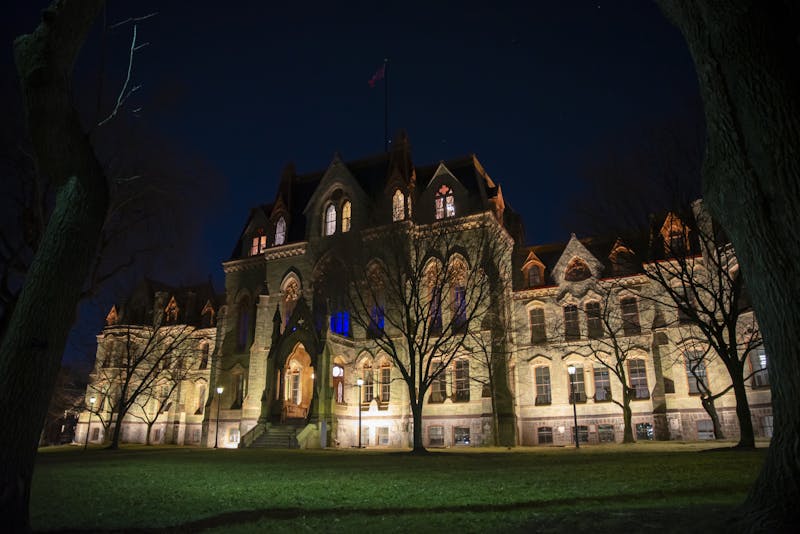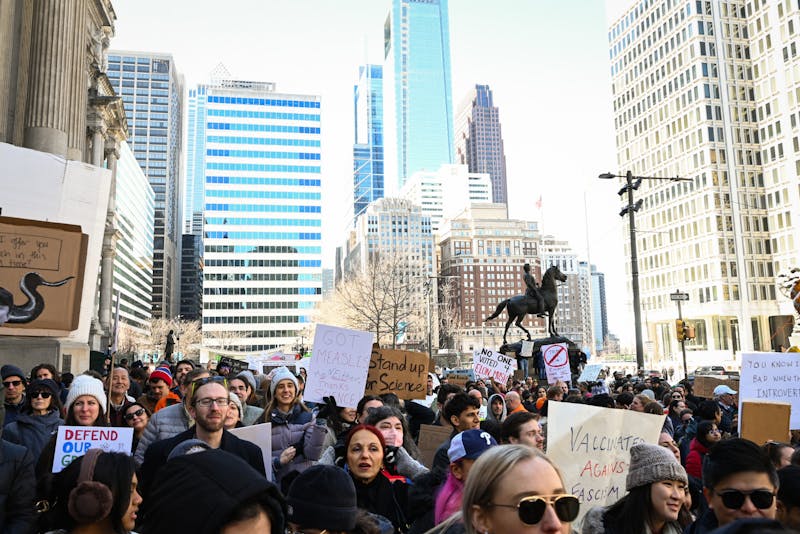Though a recent report showed that Penn has one of the highest graduation rates in the nation, college completion numbers for some minorities at the University are lagging behind.
According to data on national college completion published earlier this month by The Chronicle of Higher Education, minorities generally had lower four-year graduation rates than their white counterparts at Penn. While 90.9 percent of white students graduated in four years, those numbers were lower for black and Asian students, who had four-year graduation rates of 82.2 percent and 87.3 percent, respectively.
Penn had an overall four-year completion rate of 88.6 percent, compared to a national average of 52.5 percent at other private, nonprofit institutions. The Chronicle’s report was based on data from 2010.

Associate Dean of the College of Arts and Sciences and Director of Academic Affairs Kent Peterman said that the University has made strides in recent years to narrow these gaps.
Dean of Freshmen and Director of Academic Advising in the College Janet Tighe agreed, adding that this discrepancy has been “of major interest” to the College.
However, she said she was not troubled by the Chronicle’s report, since “at a major research university like Penn, everybody will have to learn to acquire knowledge and process knowledge differently when they get here. It’s not [about] your ethnicity or gender.”
Some, though, think the issue deserves further examination.
“Given the availability of substantial amounts of grant aid, it is important to probe why graduation rates are lower for blacks than for whites even at a place like Penn,” said Graduate School of Education Professor Laura Perna, who recently published research on minority graduation rates.
Perna identified several things — including academic preparation before coming to Penn and financial resources — as factors that may be holding some minority students back.
College senior George Hardy, who has been an active member of Penn’s black community, agreed that the lower graduation rates among black students can be attributed to “multiple factors.” He was not surprised by the Chronicle’s findings.
“I feel as though sometimes the universities aren’t doing enough for students of color, or at least the options for tutoring or other resources may not be as visible to minority communities as they should be,” Hardy said.
However, Hardy added that part of the problem may fall on the students’ under-utilization of resources such as Counseling and Psychological Services. Among the black community, he believes there is a stigma in seeking mental or academic help.
Engineering junior Michelle Leong, chair of the Asian Pacific Student Coalition, said she has noticed a similar trend among Asian students at Penn.
“The under-utilization of CAPS may be contributing to the slightly lower four-year graduation rate,” she said, adding that the APSC has been targeting mental health as one of its current initiatives.
For College junior and APSC Vice Chair of External Affairs Jon Kim, “lumping all Asian students into one category” can add to the problem.
“Because there are many Asian stereotypes, people automatically think Asians are successful, which ignores the ethnicities that are underrepresented,” he said. He pointed to groups like Cambodians and Laotians as those that sometimes go “forgotten” in the college completion picture.
While the Chronicle’s report pointed out disparities in graduation numbers between Asian, black and white students, Latino students displayed the highest completion rate at 92 percent.
Regardless of the numbers, Tighe stressed that “we would like to feel that every student we’ve accepted into Penn will find a path at Penn through which they will thrive and achieve their educational and career goals.”
Although Hardy recognized Penn’s efforts to achieve these ends, he believes hiring a more diverse staff of advisers would help alleviate academic struggles within some minority communities.
College sophomore and Vice President of External Affairs for the Puerto Rican Undergraduate Student Association Natalia Llado added that “it is definitely sad to see that there is still inequality in graduation rates in the 21st century.”
Peterman explained that, regardless of minority status, encouraging students to seek help is difficult across the board.
“Some students don’t reach out because of introversion or embarrassment,” he said. “I hear a lot of students saying ‘why is everyone else smarter than I am, I’m the only one having a problem,’ which is definitely not the case.”
Hardy agreed, adding that “things would be a lot better if people just realized the importance of reaching out to someone for help. I don’t think enough will be done until there’s a 100 percent graduation rate for all students regardless of race, gender or sexual orientation.”
Related
Asian-American admissions bias under investigation at Harvard, Princeton
Black students may be wary to seek counseling, study finds
UA resolves to improve Diversity Action Plan for LGBT community
The Daily Pennsylvanian is an independent, student-run newspaper. Please consider making a donation to support the coverage that shapes the University. Your generosity ensures a future of strong journalism at Penn.
DonatePlease note All comments are eligible for publication in The Daily Pennsylvanian.







